How we cut the speakerphone with waterjet cutting
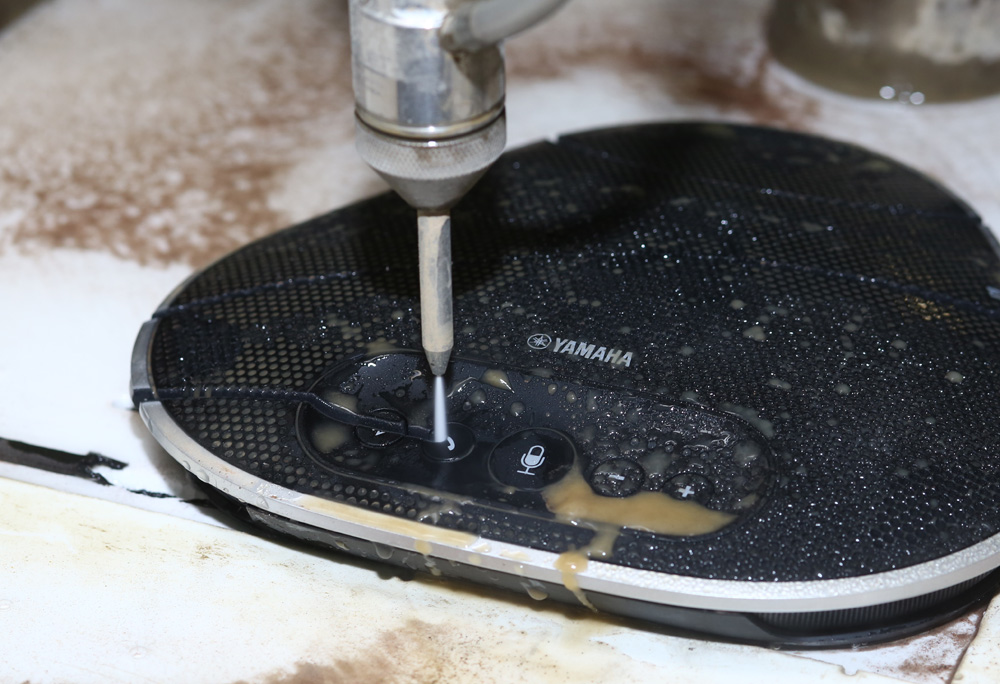
If you take your cell phone and put it on the speakerphone, and then put it in the middle of the table, then a normal conversation will not work:
- It will be good to hear only the person who is half a meter or less from the microphone.
- Shumodav will crush a part of quiet sounds of speech of distant people, which will greatly reduce intelligibility.
- Talking at the same time to you and the subscriber on the other side is to get porridge.
Therefore, people make speakerphones: a speaker, a microphone array and a processor for processing. It is assumed that you can put such on the table, and the audibility will be excellent, as if everyone were in the same room. Even from five meters quality will not be lost.
')
We are testing such speakerphones. When the Yamaha YVC-300 came into our hands, it felt very well assembled to us by touch. Therefore, we decided not to poke around in it with a crowbar, but to take it to a hydroabrasive workshop and cut it. You know, as a child I was asked if I knew what was inside the drum. Perhaps our today's experience is an echo of children's psychological trauma.
Parsing before cutting
Before cutting one of the samples (we tested the YVC-300 with each other and other speakerphones and cell phones), we naturally disassembled it to see where it would be more fun to cut. That's what's inside.
Supply:





All structural elements are made of either metal or very durable and thick plastic. Apparently, since you paid good money for a speaker with microphones, it's best if all this can withstand a couple of falls or an invasion of cleaners. To save on plastic and case with the price of the processor inside is just silly:
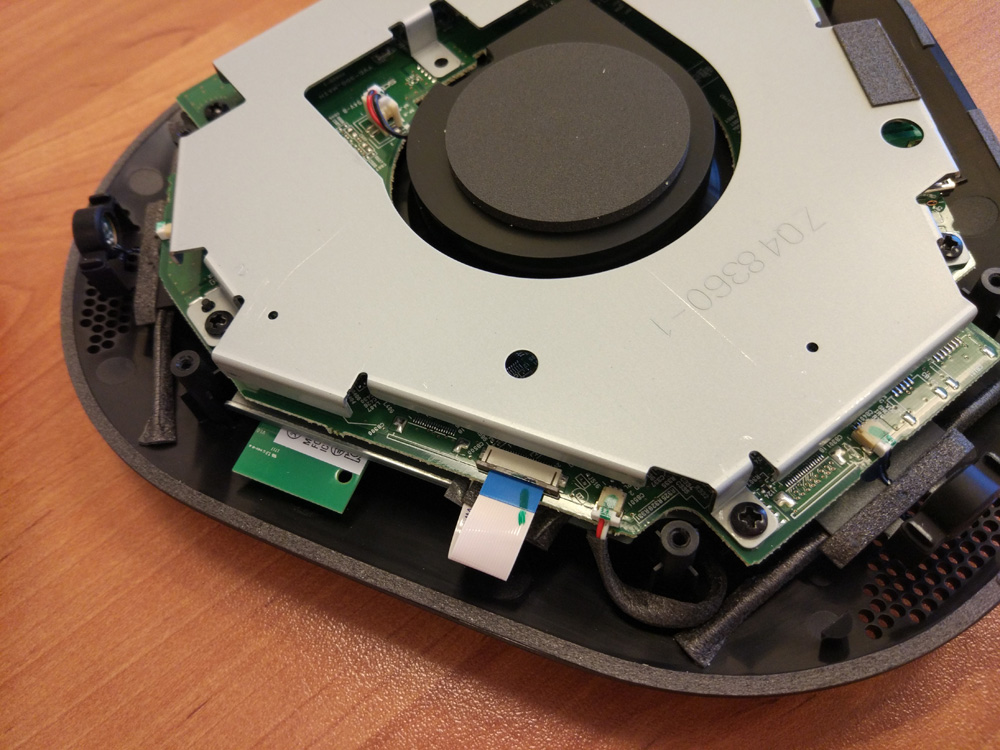
Interestingly, the board in the middle is used as part of the design and support:

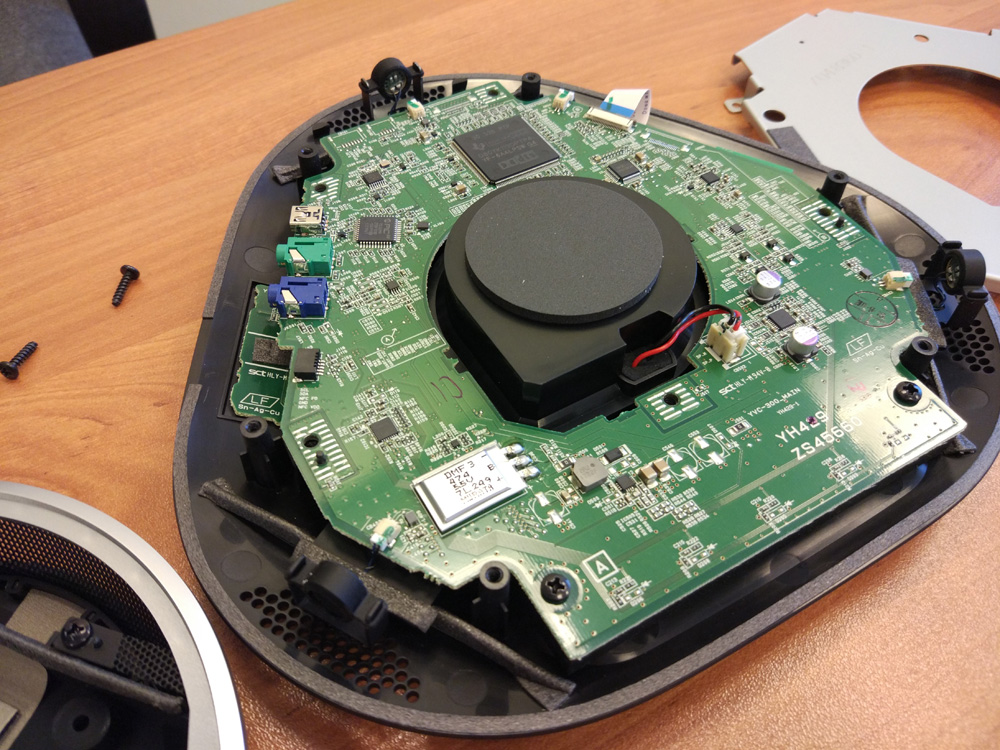
The device as a whole is a set of microphones that write sound (here they are at the corners of the triangle), a bunch of auxiliary body kit such as power converters, a speaker (in the center) and a specialized computer that can analyze almost in real time (with minimal recording delay) sound from all three microphones and calculate which part of this sound is the signal and which is the noise. And amplify the signal accordingly. The result - comfortable conversations. The processor in the photo above is also clearly visible. Looking ahead: inside it is just like a regular processor. I do not even know why we cut off his corner.
Then we collected it and sat on it. There are no visible deformations. It is necessary to check whether something has changed inside.
Getting ready for cutting
We go to the industrial zone. There is a water jet machine:
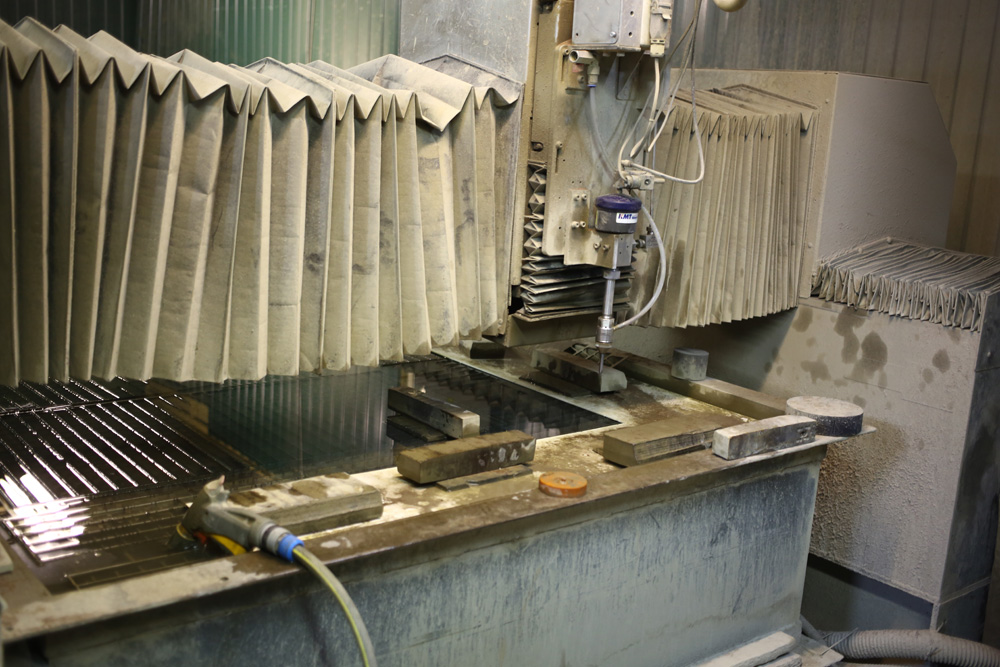
Surprisingly, in this design the jet from the nozzle head is positioned to 0.1 mm. That is, it is possible to make an emblem of the Russian Federation with a marble with an eagle and all feathers of 45 x 45 centimeters in size, and it will be completely smooth and even. Guys look at the speakerphone and ask:
- Listen, and dear, probably a thing, right? Thousand five worth?
- Hmm ... Well, almost. Rather thousand thirty five.
They decide that we are crazy, but make a practical conclusion: you need to cut not just manually, but rather drive the parameters into the CNC machine:


Simulate the device, fix it on the table and carry out a test stroke of the head (without a stream of sand and water):
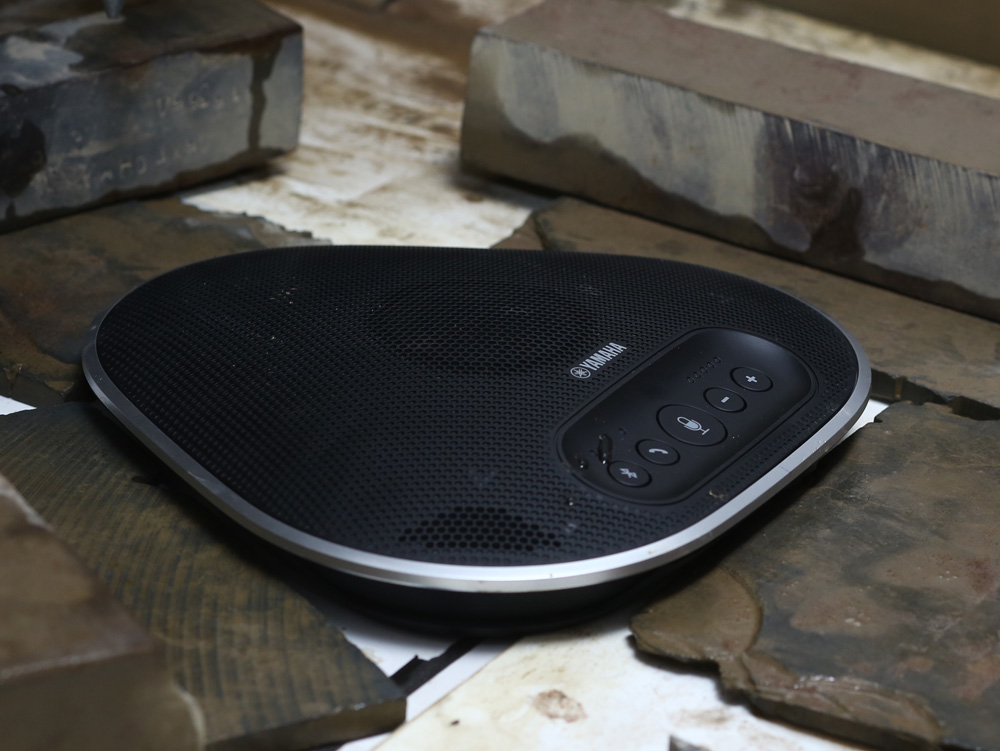
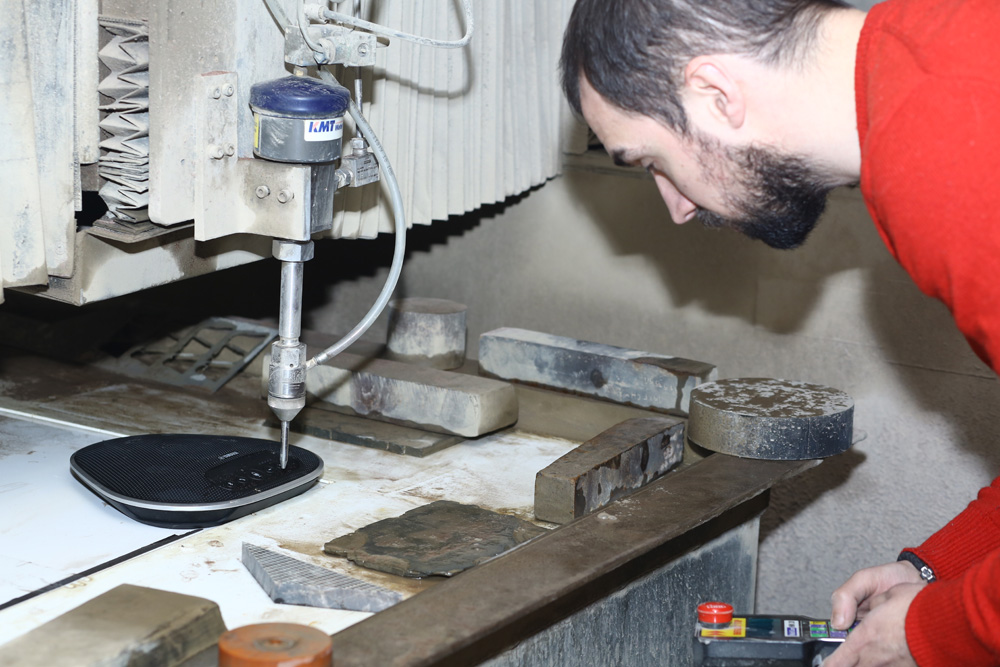
Then stick it to the plastic tightly (we could not then tear off the details) and start the cutter. By the way, if you put a finger in there, it will not only cut it off, but also infect it very, very well because of the nature of the cut:
- If you climb up there with a camera, then immediately warn the hospital. You antibiotics pump in there half a liter and even cut off something higher than the machine did.


So, here is the first cut. Notice how well the buttons are made. We also got a screw in the cut. The machine does not care, he and his cut:
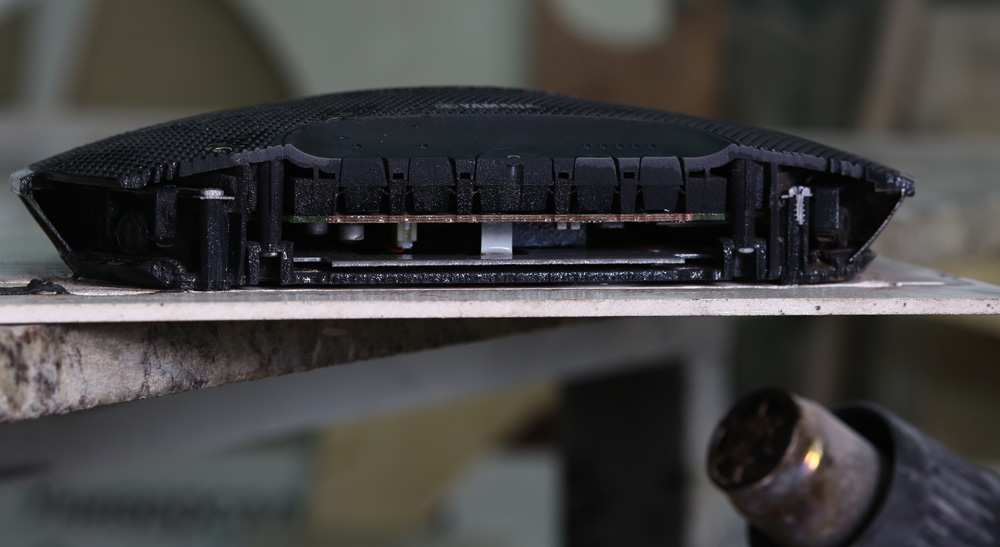


Moving on to the dynamics:



And cut off the remaining along with the arc through the corner of the processor:


Test results
The speakerphone is good. We knew that he was in order by tests, but we were worried about the quality of the assembly and materials in order to understand how long it would work without replacement. Made sure. Now how does it work:
- You pay about 500 bucks and get this thing with the cable. You plug the cable into USB (any, for example, from a laptop, or into a 220 V adapter, or into a Chinese power supply) and turn on the device. The OS loads in about seven seconds.
- Connect the piece of iron to a laptop or cell phone. It becomes the main microphone and speaker in the system. Throw it in the middle of the table in the conversation.
- Start talking on the same Skype for Business, Webex or other conferencing software. Or connect to a mobile phone via Bluetooth. Or you connect to devices VKS.
- PROFIT! It turns out very clean, loud and high-quality sound - at times better than just on the phone. All for this - distinctiveness at height.
The features are as follows: according to the instructions, you should sit three meters from the device maximum, better - up to one and a half meters. If the table is large, you need another device with a chain of microphone blocks on the cable (for example, YVC-1000). In practice, you can safely sit with this particular thing for 4-5 meters. Sounds from speech do not disappear. But at a distance of two meters, the quality is much higher. Raise your voice is not necessary, everything is fine.
The piece of iron forms virtual "rays" to sound sources, cutting off the rest. This is similar to the work of a physically rotating directional microphone, only instead - processing on a DSP processor. This means that short (about a second) drawdowns are possible if you move around the room, turn your head to say something to a colleague, and so on: the system adapts to new sound propagation parameters. Plus, the device can suppress noise, “taking away” only the voice, and focus on the speaker. Well, echo cancellation ... that goes without saying.
You can talk to two subscribers at once: and the subscriber at the other end, and you. The sound does not choke.
The volume is good, the conversations for 12 people are covered perfectly (sound pressure is up to 91 dB at 50 cm from the device).
Well, it is assembled in such a way that everything suits us. Speakerphones in this price range are about the same, differ only in service and convenience of the first inclusion. This one suits us in quality.
But, of course, we always wanted to cut something on the machine. Thanks to the vendor for providing a piece of iron for tests and fulfilling a childhood dream.
Here is a link to YouTube - how to cut the equipment and another about it .
But my mail just in case - asavostikov_habr@croc.ru
Source: https://habr.com/ru/post/434490/
All Articles